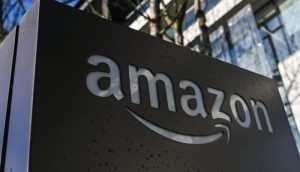It seems every week/month a new streamer is debuting yet another ad-supported tier. They’ve become the norm, while subscription costs for ad-free services continue to climb. Telecom giants like Telus are taking a page out of cable TV’s book by bundling popular VOD platforms, from Netflix and Apple TV+ to Discovery+ and Prime Video (which, just this week, officially began inserting ads into its content in the U.S.). Meanwhile, Netflix is steadily entering the appointment viewing arena with live sports.
Welcome to the Wild West of television, where the lines between linear and streaming are blurring, and audiences and advertisers are left trying to navigate and make sense of it all.
For viewers, the choice between linear or CTV primarily came down to the content offering and viewing time flexibility. Now, price is a major consideration.
“The reality for streamers is that the cost of producing compelling content is substantial and pressure to show profitability is intense. They must adapt to sustain robust programming libraries that drive and retain subscribers,” says Kevin Krim, president & CEO of US-based linear/CTV measurement platform EDO. “Delivering an entry-level option for price-sensitive consumers, supported by ads, while raising prices on ad-free levels, becomes an elegant solution in the face of rising costs and inflation.”
For advertisers, however, their demands are consistent whether linear or streaming – they want mass audiences and effective reach, as well as consistent measurement and transparency of ad delivery.
Robin LeGassicke, managing director Digital for Cairns Oneil, says the more platforms that offer advertising, the greater the content and impressions available. “The biggest benefit [of connected TV] is the data available and the targeting options. Brands have the ability to target in the same way they can target their other digital advertising, making it an efficient way to reach their target audiences. The resistance really is in the scale available and in some instances the lack of transparency in relation to the placements. It is very fragmented, and therefore difficult to build reach efficiently. There is also a fragmented measurement system, that does not connect back to their linear buys, or give an easy way to look at the various platform DSPs together, such as Roku and Samsung.”
Julie McMillan, VP partner strategy, at MAGNA, agrees that connected TV has evolved beyond an emerging platform to a staple in most brand campaigns. “We’ve also seen clients successfully implement CTV for lower funnel tactics using custom creative such as QR codes, subscribe and save ads, and product-focused content, as well as takeovers, sponsorships, and precise targeting. While clients no longer question the importance of CTV, they continue to push for measurement solutions to address the question of how much impact it has.” However, McMillan says there are several partners that now offer incremental reach targeting, and Numeris VAM measurement continues to evolve, providing valuable insights to inform planning decisions.
Jeremy Haft, chief revenue officer at digital tech and media execution company Digital Remedy, wonders whether the burst of ad dollars moving towards CTV, the competition, and AVOD opportunities will lead to a fragmented and confusing landscape for buyers. He says that ultimately, despite the new formats, pricing options and packages, the streaming platforms that win will be those that simply offer the most campaign effectiveness per dollar spent with transparency for advertisers. “Advertisers will expect to see efficient reach and frequency directly tied to ROI and preferences, pricing tiers, and thresholds are all going to be dependent upon how much advertisers see ROI from investing in streaming.”



















